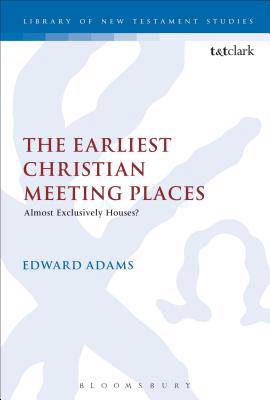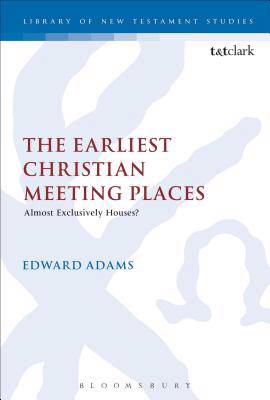
- Afhalen na 1 uur in een winkel met voorraad
- Gratis thuislevering in België vanaf € 30
- Ruim aanbod met 7 miljoen producten
- Afhalen na 1 uur in een winkel met voorraad
- Gratis thuislevering in België vanaf € 30
- Ruim aanbod met 7 miljoen producten
Zoeken
€ 139,95
+ 279 punten
Uitvoering
Omschrijving
Edward Adams challenges a strong consensus in New Testament and Early Christian studies: that the early Christians met 'almost exclusively' in houses. This assumption has been foundational for research on the social formation of the early churches, the origins and early development of church architecture, and early Christian worship. Recent years have witnessed increased scholarly interest in the early 'house church'.
Adams re-examines the New Testament and other literary data, as well as archaeological and comparative evidence, showing that explicit evidence for assembling in houses is not nearly as extensive as is usually thought. He also shows that there is literary and archaeological evidence for meeting in non-house settings. Adams makes the case that during the first two centuries, the alleged period of the 'house church', it is plausible to imagine the early Christians gathering in a range of venues rather than almost entirely in private houses. His thesis has wide-ranging implications.
Adams re-examines the New Testament and other literary data, as well as archaeological and comparative evidence, showing that explicit evidence for assembling in houses is not nearly as extensive as is usually thought. He also shows that there is literary and archaeological evidence for meeting in non-house settings. Adams makes the case that during the first two centuries, the alleged period of the 'house church', it is plausible to imagine the early Christians gathering in a range of venues rather than almost entirely in private houses. His thesis has wide-ranging implications.
Specificaties
Betrokkenen
- Auteur(s):
- Uitgeverij:
Inhoud
- Aantal bladzijden:
- 280
- Taal:
- Engels
- Reeks:
- Reeksnummer:
- nr. 450
Eigenschappen
- Productcode (EAN):
- 9780567282576
- Verschijningsdatum:
- 19/12/2013
- Uitvoering:
- Hardcover
- Formaat:
- Genaaid
- Afmetingen:
- 163 mm x 236 mm
- Gewicht:
- 566 g

Alleen bij Standaard Boekhandel
+ 279 punten op je klantenkaart van Standaard Boekhandel
Beoordelingen
We publiceren alleen reviews die voldoen aan de voorwaarden voor reviews. Bekijk onze voorwaarden voor reviews.








